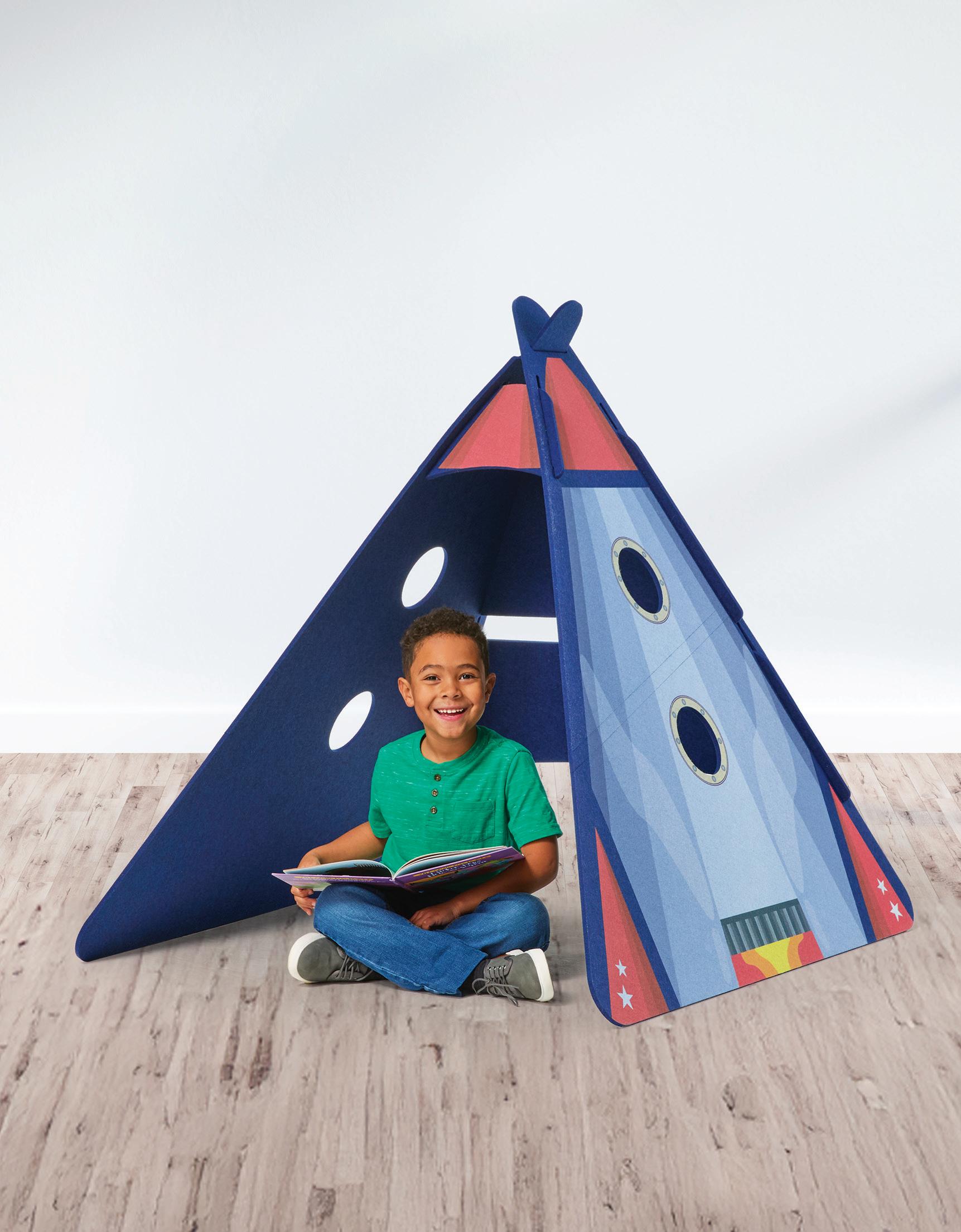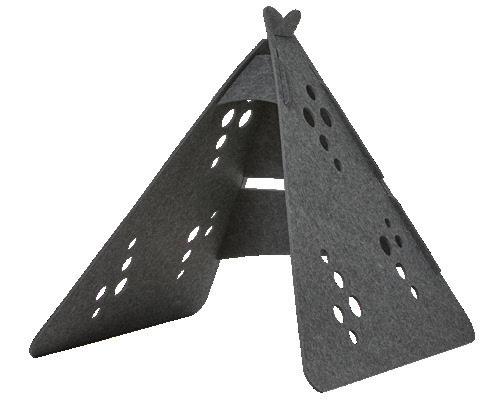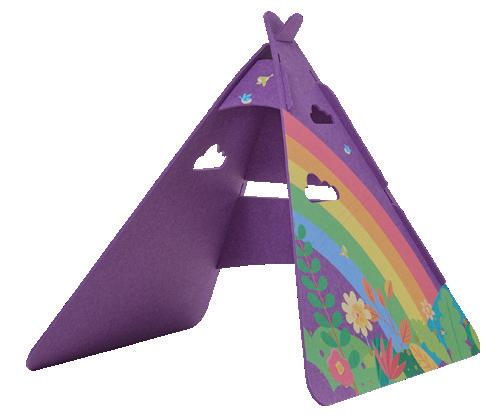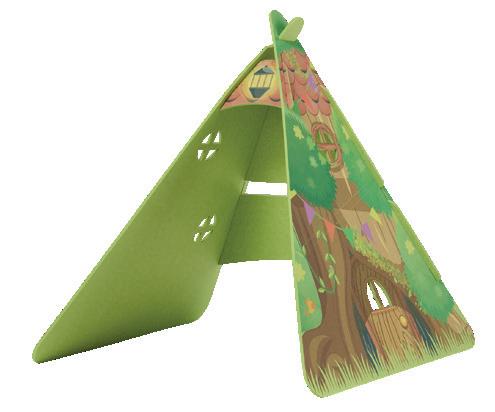Spark curiosity. Ignite learning.

Four ways to KEEP PATRON DATA SAFE
EMBRACE AI as a learning tool
PROMOTE
SUSTAINABILITY in your library
Grab readers’ attention so they don’t miss out on what’s new, popular, and recommended.







Spark curiosity. Ignite learning.

Four ways to KEEP PATRON DATA SAFE
EMBRACE AI as a learning tool
SUSTAINABILITY in your library
Grab readers’ attention so they don’t miss out on what’s new, popular, and recommended.






Much more than quiet reading spaces, libraries are now engaging makerspaces, collaborative brainstorming areas, and lively discussion spots.
Libraries invite us to come together and learn, both on our own and from others.
This past year marked significant shifts in education, with the continued emergence of artificial intelligence (AI) and tools like ChatGPT rising to the top. Much like adapting and transforming into more than just reading spaces, libraries are also embracing a growth mindset when it comes to AI and new technology, exploring what’s possible and seeing how these tools can help improve workflows.
This open, flexible mindset is the key to creating a welcoming and engaging space for all who visit.
In our latest issue of the Demco Array, you’ll find ideas for harnessing the potential of AI in your own space, tips for safeguarding your patrons' data and privacy, fresh approaches for promoting sustainability in your library, and more.
This is for all the librarians who go above and beyond to learn, grow, and make their spaces all they can be — and so much more. Enjoy!


Chad Edwards, President
With 120 years under our belt, experience and innovation go hand in hand at Demco. As we celebrate this milestone, it's only fitting to reflect on our past while looking ahead to the future. For decades, we've adapted and grown alongside you, and we're looking forward to many more years of creating innovative solutions that keep you ahead of the curve as libraries and education spaces evolve. Here's to helping you thrive for years to come!
The Demco Array celebrates the role of librarians and pre-K–12 educators in our communities while sharing an array of ideas and inspiration to help you spark curiosity, ignite learning, and transform lives.
“Right this way!” All signs say,
Ensure your visitors can find the way to wherever they want to go.
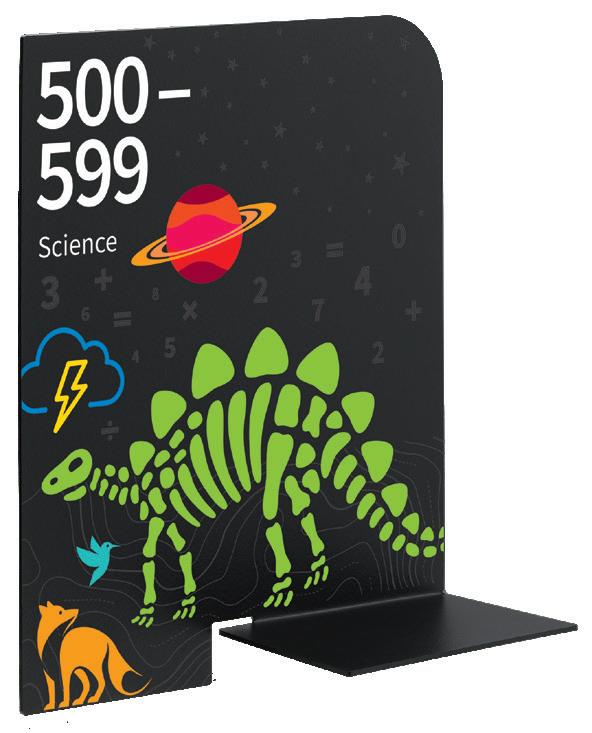
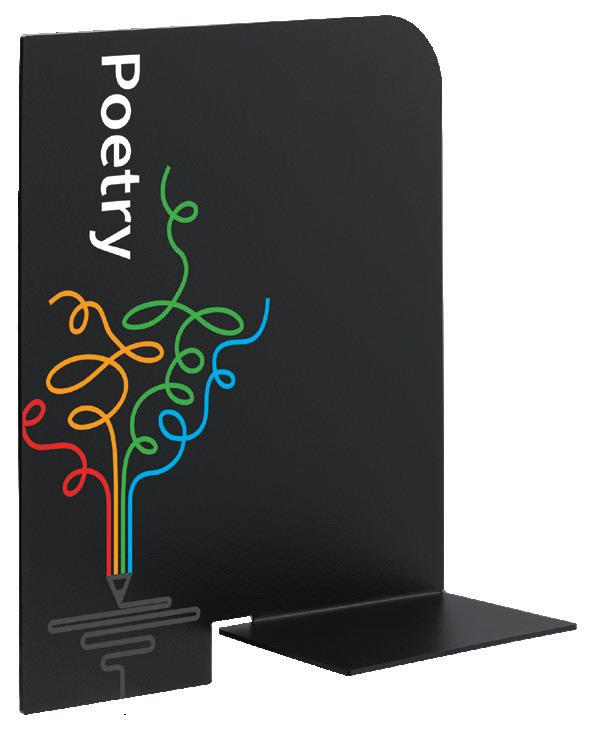


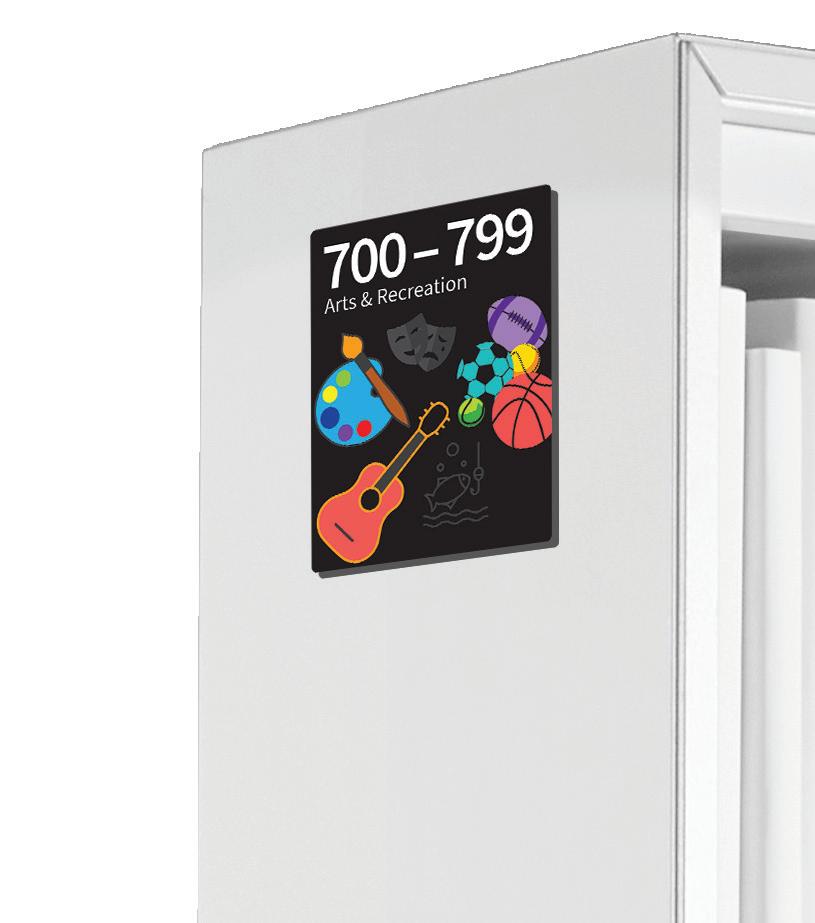
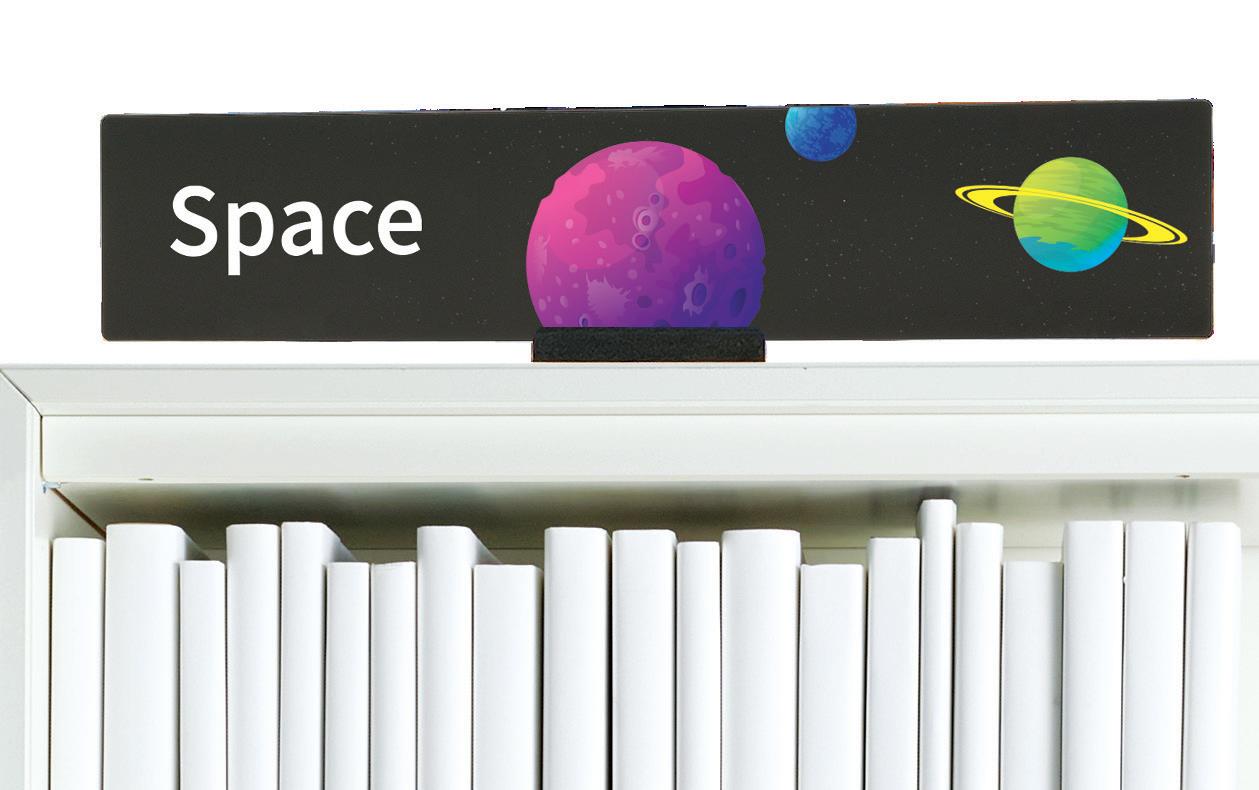
Shop Wayfinding Products
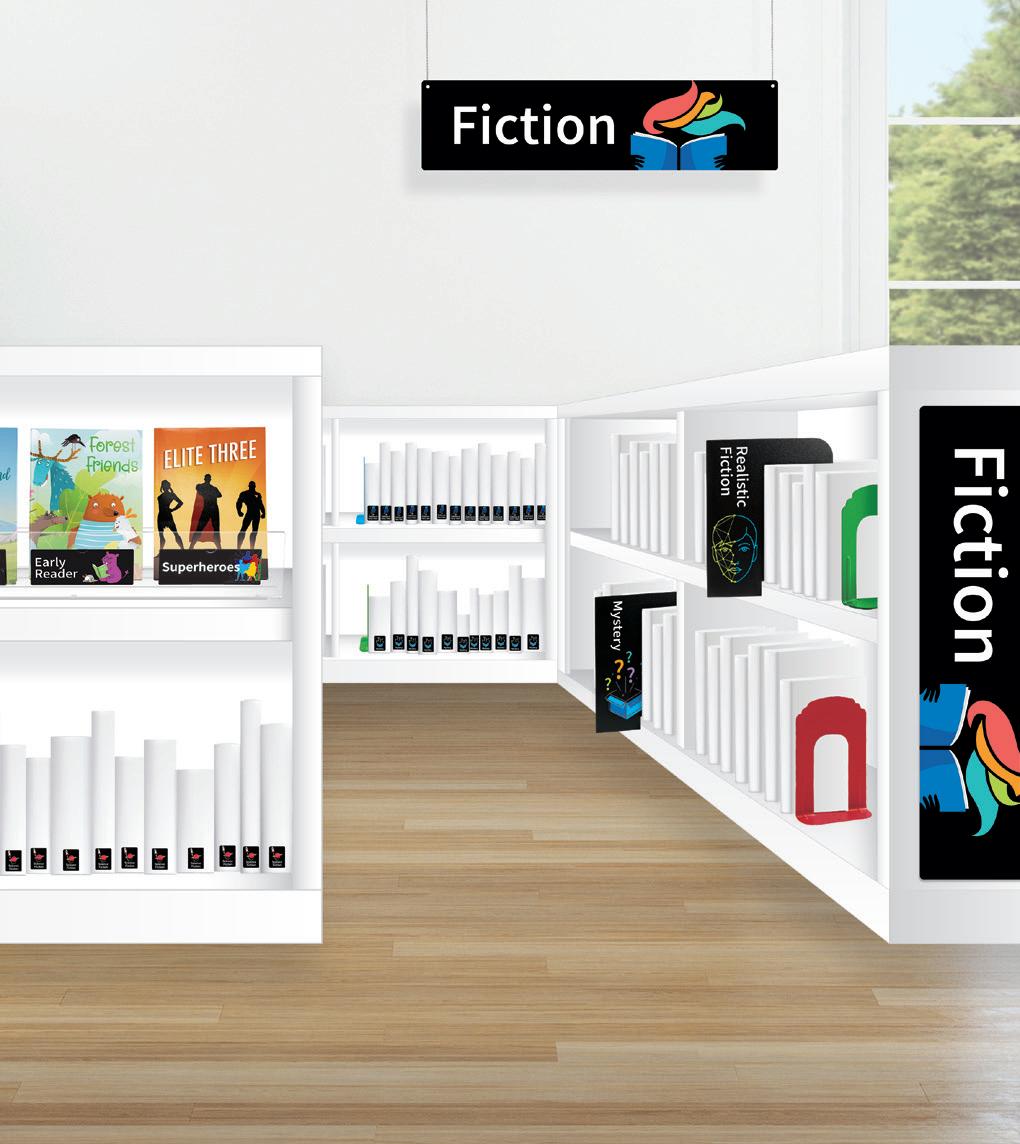
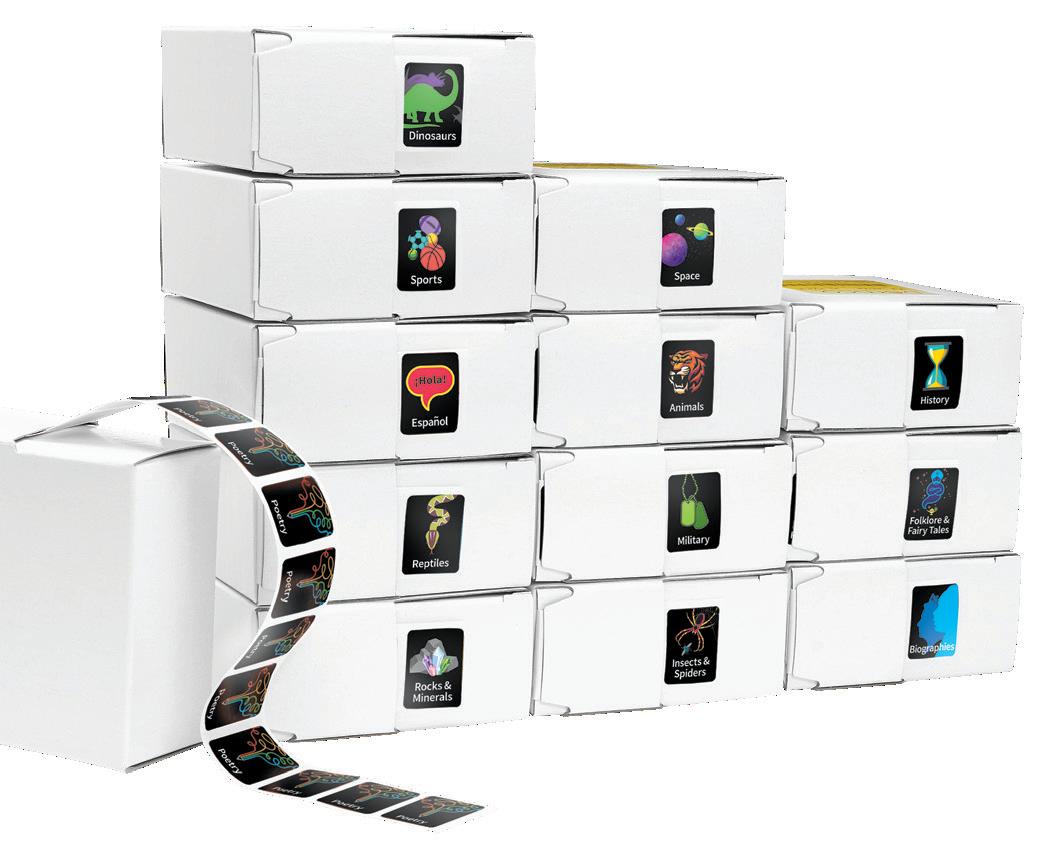
“Here I am!” Every label proclaims,
Make browsing easy and let readers know they’ve found the genre they were searching for.
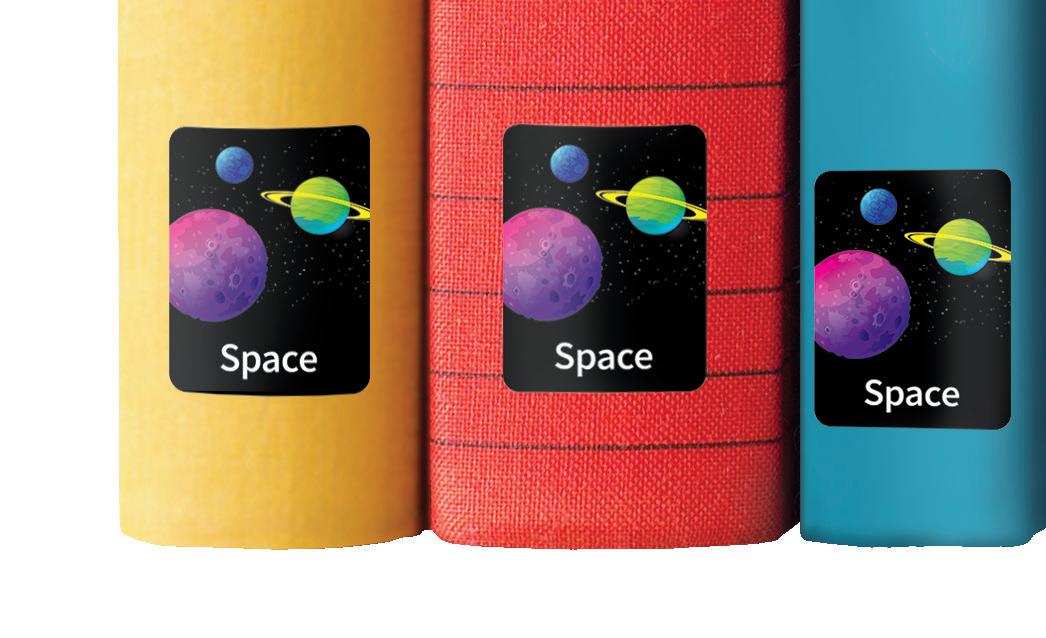





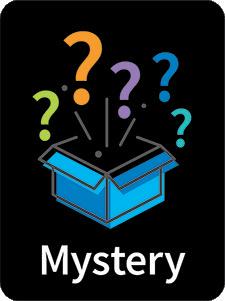





By Kate Larson
Help students navigate the next big technological revolution.


Kate Larson Writer, Researcher
Kate has a background in non-profit communications and is particularly interested in the ways that language drives behavior changes through education, awareness-building, and the power of an irresistible narrative.

Chad Martin Demco Product Manager
Chad has over a decade of experience helping Demco’s library and school customers. Specializing in library supplies, he is passionate about offering quality products to help librarians and educators create more effective learning spaces.

Shannon McClintock Miller Educator, Speaker, Consultant, Author
Shannon serves as the pre-K–12 district teacher librarian and innovation director at Van Meter Community School District in Iowa. She is also the Future Ready Librarians Spokesperson working with All4Ed in Washington, D.C., and the author of several children's and professional books.

Amanda Struckmeyer Library Media Specialist
Amanda is the editor of the Children’s and Early Literacy Collaborative Summer Library Program manual and co-authored the book "DIY Programming and Book Displays: How to Stretch Your Programming Without Stretching Your Budget and Staff.” She has also developed numerous programs for tweens.





Introducing Our Newest Book Cover Solution: CircExtender® Xtreme
By Chad Martin and Demco
Explore what goes into creating an amazing solution for covering books.
By Kate Larson and Demco
Protect the data privacy of patrons and ensure digital security.
By Kate Larson
See how an idea turns into a successful Demco product in seven steps.
By Shannon McClintock Miller
Bring nonfiction to life using effective strategies and innovative methods.

By Kate Larson
Suddenly, it seems like artificial intelligence is everywhere. It’s in our phones, our inboxes, even our kitchen appliances. It’s generating photos that look real (except when they don’t) and conversations that feel like chatting with a friend (or maybe a friend who tends to make things up). It’s generating enormous amounts of buzz, sparking a spending frenzy in the tech sector, and prompting reactions that range from alarm to a full-throated embrace. It’s hard to keep up — which may be why many Americans described their feelings about AI in a recent YouGov survey using words like “cautious” (54%), “concerned” (49%), and “skeptical” (40%).
Similarly, the question of AI in K–12 schools is a complicated one. Is generative AI a data security risk? Maybe. Is it a tool that can help students become better researchers and thinkers? Maybe. Is it just the newest way for students to cheat? Maybe — although data from an article in Education Week suggests that fewer students are doing so than you might think. Perhaps more importantly, the question is: How should school librarians, who play such a critical role in teaching information literacy, be discussing or using AI with their students?
“We’ve been talking about AI as a school a lot this year,” notes Diana Rendina, media specialist and teacher librarian at Tampa Preparatory School. “We’re still kind of working on creating policies.” Rendina is excited about the diversity of ways that AI can support learning: “I think there’s a lot of potential for really positive uses of it. It’s just finding the way to manage it.”
When people talk about AI in school, they’re usually referring to generative AI, computer models that learn quickly as their creators feed it data, eventually becoming able to create text, images, videos, and other content. While computer scientists have been working on deep-learning models for decades, what’s changed recently is that these AI programs are finally capable of generating realistic-looking outputs that (sometimes) match or exceed human capabilities. AI photos can look, at first glance, like they were taken by a digital camera. And online chatbots used to sound like, well, chatbots. Now, they often sound like you’re talking to a fellow human being.
I think there’s a lot of potential for really positive uses of it. It’s just finding the way to manage it.”
—Diana Rendina , Media Specialist and Teacher Librarian, Tampa Preparatory School

Generative AI powers many apps you have probably heard of, such as ChatGPT, Canva, and Google Assistant, as well as many others. And of course, as educators and parents are discovering and making sense of these programs, so are their students. “I see a lot of students using AI to make memes, like AI image generators,” says Rendina, “and they just create weird memes that they think are hilarious. I have heard of some of them trying to have conversations with the AI chatbots … so I think they’re curious.” At the same time, she says, AI has yet to play a huge role in the lives of her students, who range from grades 6–12. “They’re definitely talking about it,” she shares. “And they’re definitely aware of it — high schoolers more than middle schoolers. But I don’t know how much they’re utilizing it yet.”
I would like to have more options for students that are within an educational framework.”
—Diana
Rendina
,
Media Specialist and Teacher Librarian, Tampa Preparatory School
COULD AI BE A VALUABLE TOOL IN THE SCHOOL LIBRARY?
One of the reasons students may not be using AI to do much more than create memes is that many schools have yet to incorporate it into learning activities. But Rendina envisions a future where it can assist with research — especially in the early stages, when students tend to get
stuck. “Sometimes students have trouble coming up with a research paper topic,” she explains. But what if they could ask the question: “AI, give me 20 different research paper topic ideas focused around how America was changed by the Civil War?” In a makerspace setting, Rendina thinks AI could help students list different ways to solve a problem or brainstorm techniques for creating a prototype. She also sees its value in helping students come up with search strategies, like selecting terms and keywords to query a database. “I think it has a lot of power for that brainstorming phase of research,” she says.
Generative AI can also function as a tool for writing support. While many educators are understandably concerned about students using AI to generate finished writing assignments, it could plausibly be used instead to serve up ideas and answer questions about writing technique. “Maybe you’re having trouble with transition words,” Rendina explains, “and you [say]: ‘You know, hey, give me a list of 20 transition words or phrases.’” AI programs could also offer feedback on paragraph or sentence construction, show
students how to format citations, and suggest ways to swap casual language for phrasing that’s more formal or academic.
Finally, Rendina is hopeful that educational and library vendors will start to incorporate AI into their existing products to improve search functionality and support student research. One particularly effective application of AI is making it easier to surface the information or resources you need from existing databases. “I would like to have more options for students that are within an educational framework,” she points out, “and not just ‘Let me send you off into the wild, wild west of AI websites and hope that they’re not stealing your data.’”
Already, many schools have banned ChatGPT, a popular AI chatbot. Along with cheating concerns, some educators and administrators are concerned about the app’s tendency to hallucinate — or produce false information. In fact, every generative AI program hallucinates, as Arizona State University computer science professor Subbarao Kambhampati explained to Scientific American. Since AI is predictive, it will always output text, even when it lacks access to accurate information. “The reality is there’s no way to guarantee the factuality of what is generated … [all AI] creativity is hallucination, to some extent,” noted Kambhampati. While AI program developers can implement safeguards to verify that the text being produced is accurate, misinformation will always slip through the cracks, which means that students must learn not only how to use AI wisely, but also how to recognize its limitations.
The recent explosion of AI into daily life has also sparked concerns about student privacy. While educational technology companies are required to adhere to policies and laws protecting student privacy, AI apps not designed for schools may be collecting, compiling, and selling user data, including student search
queries and any identifying information they share. Students can also use AI to generate fake photos or videos (called deepfakes) featuring images of their classmates, which has already led to serious consequences for student creators, as well as for students whose images were stolen.
Beyond determining whether or how to use AI, school librarians have an important role to play in building students’ AI literacy skills. “I feel like this is another kind of evolution in information, and information literacy, and research,” Rendina notes. “Obviously, there are risks of students abusing it, but there have always been ways students can use technology in an incorrect way.” In place of fear, Rendina says, librarians should take the opportunity to lead with curiosity and discernment. Students can learn how to cite information gathered via AI, to verify it using trusted sources, and to make informed choices about when and where AI can be helpful rather than misleading.
How can librarians start to include AI literacy in their curriculum? Check out resources from the International Society for Technology in Education (ISTE), School Library System Association of NY, and the Massachusetts Library System. But you could also just ask a chatbot. When asked, “How can school librarians teach their students AI literacy?” AI offered a detailed 12-point list, including hands-on activities for experimenting with AI models, case studies to build critical


Navigate your library with a splash of color and a swirl of shhh. Chosen by librarians nationwide, Calm Lavender is the Demco LibraryQuiet™ Booktruck Color of the Year!

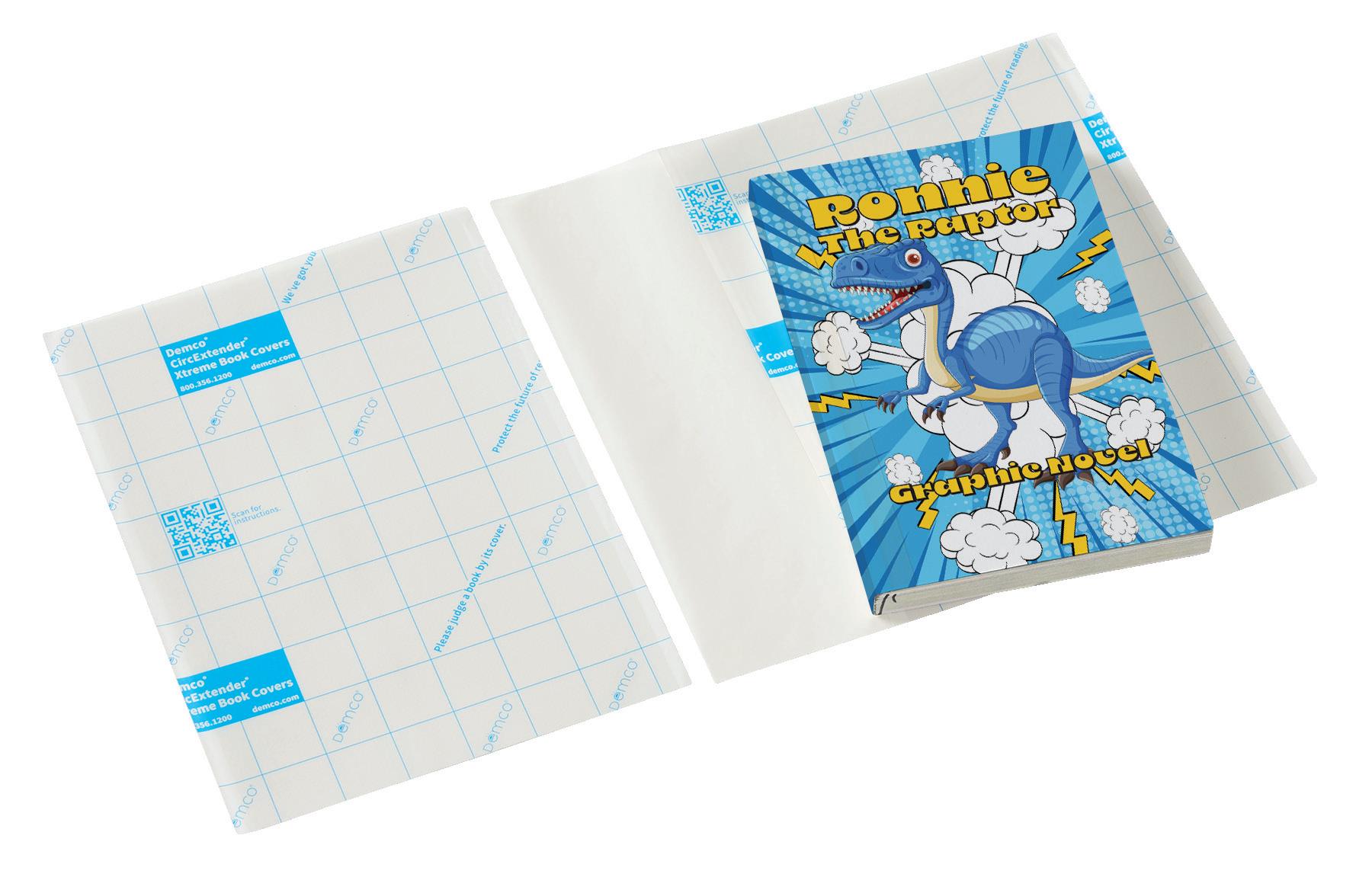
Young Americans love the library. According to the American Library Association (ALA), 54% of Gen Z and millennials have visited their local library in the past 12 months. While they also engage with social media, articles, blogs, online magazines, and apps, they prefer print books. In fact, they read about twice as many print books per month as they do e-books or audiobooks. This usage means your shelves will be browsed and your books will be heavily circulated. So, your softcover books are a resource worth protecting to help stretch your budget.
“I was blown away by how painless and smooth these covers are to apply. For me, the simplicity comes from
the straightforward directions included with the covers and the hassle-free application that only requires a pair of scissors and a bone folder. As a very busy librarian with only small pockets of time to complete book-processing tasks, I appreciate the convenience and practicality the CircExtender Xtreme covers offer. These durable, foolproof covers are a much-needed change for my book-covering routine.”
—Amy Drake , Teacher Librarian
(@the_snarky_librarian),
Mitchellville, IA
At Demco, we pride ourselves on providing the right book protection selections for every library collection, and we're excited to have added the CircExtender Xtreme Bookcover. This durable adhesive cover is the perfect solution for the highcirculation, high-value books in your collection. We spoke with Product Manager Chad Martin about why we wanted to bring this product to market.
When designing the Xtreme, Martin explains, “We took time to test a lot of existing book covers and through that process, we identified some pain points. We also recognized an opportunity to make what is currently the most popular highlevel, high-quality book protection easier to use and more affordable for our customers. Then we focused our time and development on eliminating the pain points and perfecting the features we felt were important to keep.”
To differentiate the Xtreme, it needed to fill the needs that were uncovered during development. According to Martin, “It needed to be crystal clear, the adhesion needed to be top-notch, and it couldn’t start peeling off after a couple circulations. The application process needed to be easier as well. So, we added pull tabs to the liner to create an easy-release liner.”
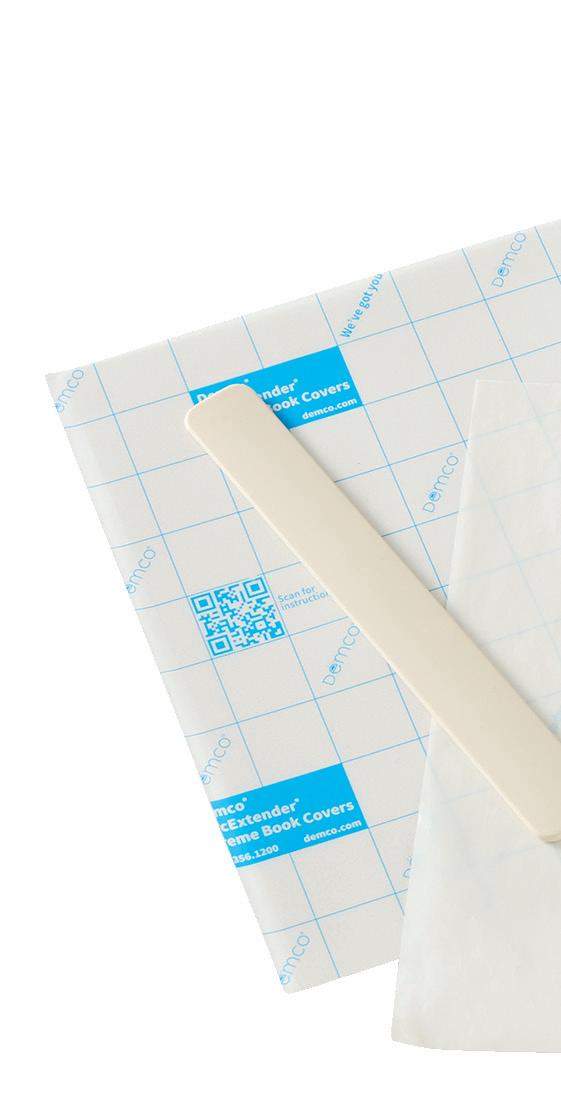

Martin calls the Xtreme the best of the best and thinks librarians will agree. “What I especially love about the CircExtender Xtreme is the ease of use. Anyone can use it, whether they're covering a book for the first time, the hundredth time, or even the thousandth time. All you have to do is grab the pull tab and pull. We intentionally focused on the small details to make this an easy process from start to finish. I think the ease of use is what library professionals will love about this cover as well. With our added features and recommended application steps, it’s even easier to use than the cover they're using today. It’s also more affordable than comparable covers.”

Why should librarians add this product to their book protection arsenal? Martin notes, “It’s about having that range of covers, repair products, and methods to safeguard their investments. Librarians may find something that works for them and stick with it, but the Xtreme Cover is the cover that I'll be recommending to any librarian who doesn't know where to start. With the CircExtender Xtreme, you get superior protection, enjoy simpler processing, and you save money. If you don't need that level of protection, we offer options that are even more affordable and still protect books, like the Demco CircExtender Bookcover, which is 2 mil — the thinnest cover we offer. For librarians working with minimal budgets, I would recommend at least
two options: a thin cover and a thick one like the Xtreme Bookcover. For those with larger budgets, I would suggest adding some middle-range cover options, like the Demco CircExtender Poly Adhesive Cover and other laminate roll options, like the CircExtender3X or the CircExtender2X.”
For Demco, innovation is an ongoing process, and Martin is already looking for ways to continue to impact customers. Martin says, “We’re always receiving customer feedback as well as input from the librarians we work with. And I am always looking to see if there are areas where we can enhance our solutions. Our goal is to offer the right protection for the right book, and I want to make sure we've got the best options available in terms of quality, ease of use, and affordability.”
To extend the life of your paperback books, choose Demco CircExtender® Covers — available in pre-sized sheets for a quicker, more convenient application process.
Demco CircExtender Xtreme Book Covers
Our thickest book cover offers superior protection and durability that’s like turning a paperback into a hardcover.
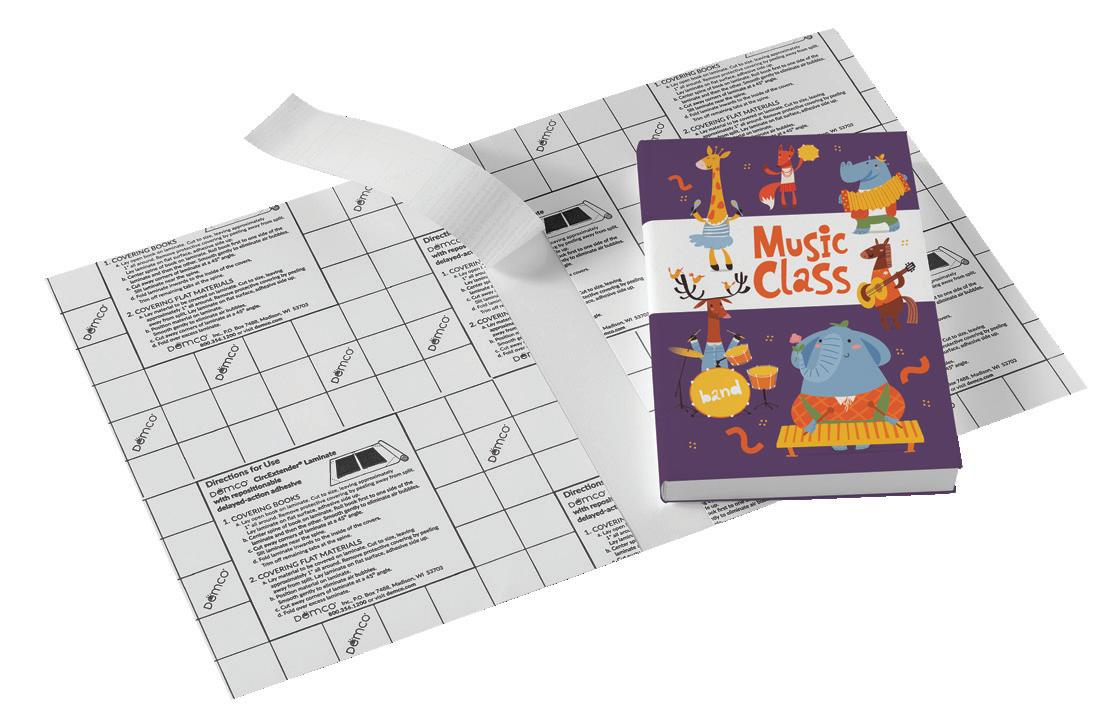
Demco CircExtender Book Covers
Take advantage of the economical way to extend a paperback’s natural shelf life.

Demco CircExtender Poly Adhesive Covers
This go-to, mid-range product is the perfect way to increase the circulation life of your paperback books.

Find CircExtender on rolls at demco.com , shop circextender.
Preserve a like-new look for longer with Demco Book Jacket Covers, which shield hardcovers from dust, damage, and wear. Choose covers on rolls to maximize your budget and cut only what you need!

Demco Paperfold™ Adjustable Book Jacket Covers
Demco Superfold™ Book Jacket Covers
Superfold’s thick material and paper backing provides extra, archival-safe protection without added difficulty.
Offering the perfect blend of versatility and affordability, plus a protective paper backing, this one product can cover most of your collection.
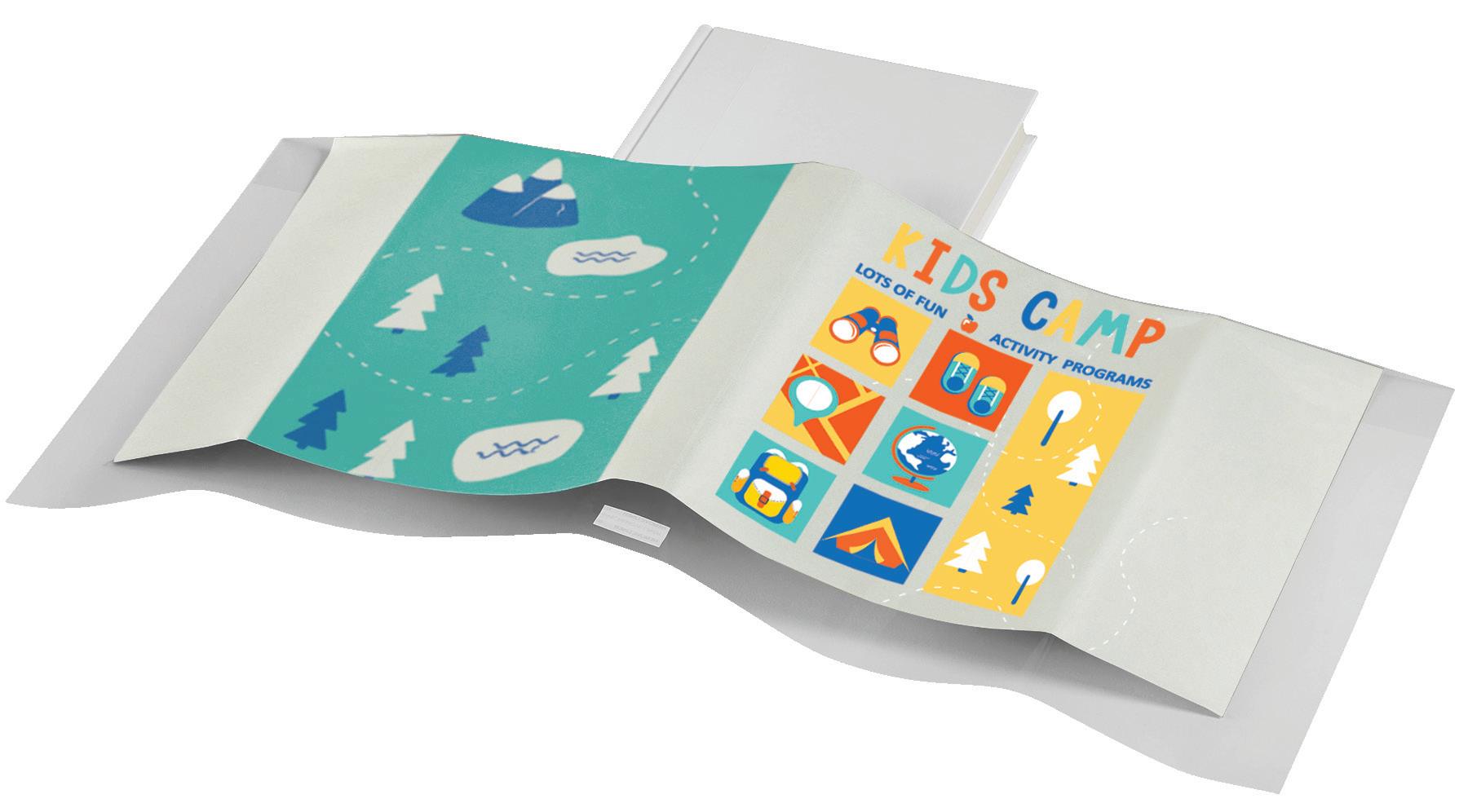


Demco Durafold™ Book Jacket Covers
Protect your budget, too, with this economical option that serves as your first line of defense against damage.
Find Demco Book Jacket Covers on sheets at demco.com , shop book jacket covers.
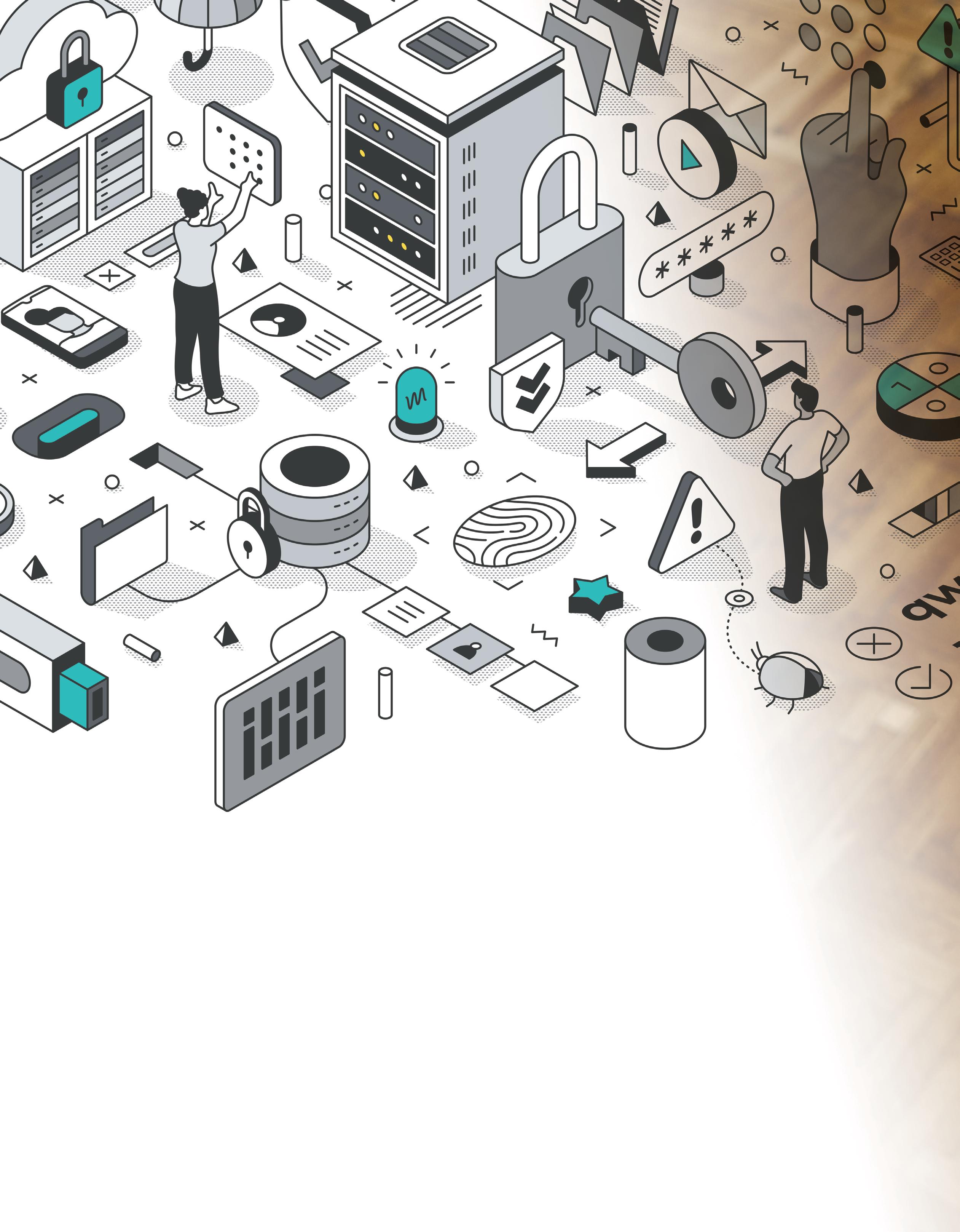
By Kate Larson and Demco
In today’s tech-forward world, public library visitors often leave behind a big digital footprint. From using public computers to access the internet and job search portals to borrowing e-books, participating in virtual workshops, or attending events that require online registration, patrons generate significant amounts of data. Libraries also collect detailed records, including borrowing history, registration information, and participation in community programs, all of which contribute to a rich repository of personal and behavioral data.

so much
The expansion of digital services in public libraries has made resources more accessible, empowered patrons with technology, and enhanced community engagement through innovative programming. Advanced data management systems have also made organizing and accessing patron information easier for libraries. However, these technologies create vulnerabilities. Public libraries, like other institutions, face the risk of data breaches and cyberattacks, and patrons’ data can be collected, mined, or even sold — often without their knowledge or consent.
So how can public libraries protect the data privacy of their patrons and ensure their digital security? Here are four key areas of focus.
Every organization that collects and stores so much personal data must make secure storage systems a top priority. Start with the following steps:
• Inventory data. If you don’t know precisely what data you’re storing, where it’s stored, and how it is encrypted, it’s time for a full audit.
• Practice good data hygiene. Set up software correctly, keep firmware up to date, promptly install the latest patches and updates, uninstall software you’re not using, and deactivate old user accounts.
• Make data harder to access. Require strong passwords, robust encryption tools, and multifactor authorization.
Libraries need clear, enforceable technology policies for library-owned devices, software, and cloudbased services. You might start by looking to federal student privacy laws for guidance, including COPPA, the Children’s Internet Protection Act (CIPA), and the Family Educational Rights and Privacy Act (FERPA). Organizations like the American Library Association (ALA) often provide resources to help libraries draft comprehensive data privacy policies, too.
Even the most well-written policies are ineffective on their own; they must be communicated to everyone involved. You’ll need to spend time and resources training staff to understand your policies, be comfortable following them, and be able to explain them to patrons. By combining clear policies
with ongoing staff education, libraries can create a safer, more secure digital environment for their patrons.
Most people are aware of the risks posed by generating so much data. In surveys conducted during the summer of 2020 and spring of 2021, the Center for Democracy & Technology (CDT) found that 72% of high schoolers and 70% of parents are concerned about young people’s data . While most parents (93%) and high schoolers (82%) said they wanted schools to seek their input when deciding how they use their data, only 44% of parents and 26% of students say their schools have actually done so.
Like schools, libraries can address this level of anxiety by adequately communicating with families about data security. Help visitors learn how to keep their data safe — not just to comply with specific policies, but as a critical part of their everyday lives. Learning how to protect one’s data from being collected, exploited, and/or hacked is a critical 21st-century skill.
Once someone creates an account with a tech program, it can be difficult to control whether the resulting data is shared. One of the biggest ways libraries can help is by pushing software vendors to sign agreements governing the collection, storage, and use of data. For example, which third parties will have access? According to a December 2022 study from the nonprofit Internet Safety Labs (ISL), 96% of apps used or recommended by K–12 schools share data (including location and contact information) with third parties — often with advertisers or other entities that could profit from that information.
So, even as the government begins to hold companies accountable for complying with
privacy laws, libraries also must step up their efforts to protect patron data. After all, today’s world encourages people to constantly pour huge quantities of personal information into the hands of companies that want their money and attention. Let’s keep their data safe now — and train them to continue that effort in the future.

Demco’s Restination Lounge Furniture Collection includes modular pieces that can turn any space into a comfortable place to connect, unwind, and recharge. It includes a range of soft seating and tables that work together to furnish any space, from a bustling common area to a quiet corner.



+ Various seating styles (including rockers) offer a choice of comfort for every user
+ High-density foam cushions ensure a relaxing yet supportive place to sit and unwind
+ Modular components can be combined to suit any activity or space
+ Pieces coordinate with Demco ColorScape®, CalmScape, FLEXplore, and Tidal Collections
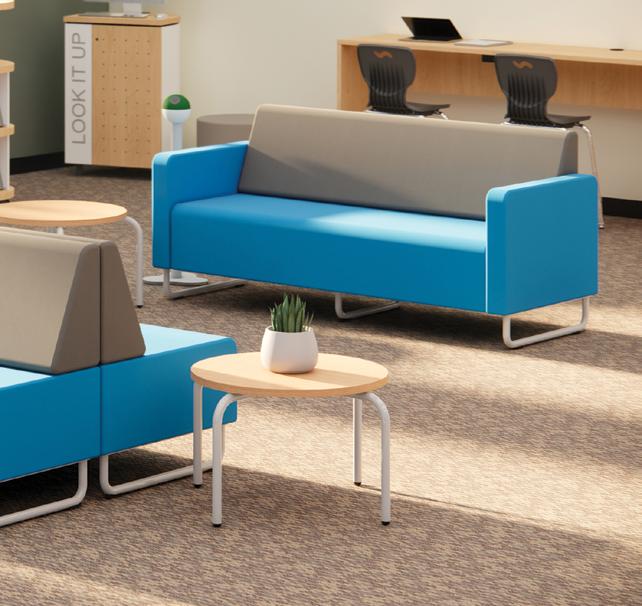

By Kate Larson
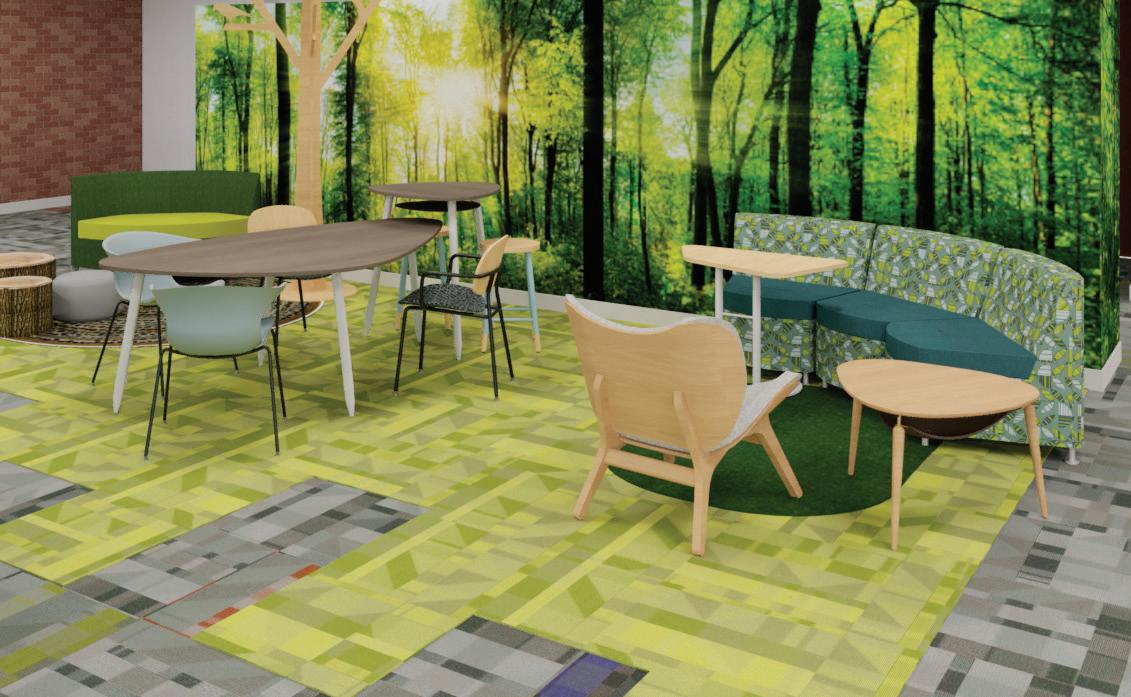
Common areas set the tone for how your patrons are welcomed into your building (or not welcomed), how they interact (or don’t interact), and whether they enjoy being in your space. They bring local community members from different walks of life together.
But how do we design vibrant, irresistible common areas in libraries? Here’s how (and why) to get started.
The public library is valued as a place of convening, a physical space that connects the community.”
From hallways to lounges, cozy nooks to sprawling atriums, communal areas are essential components of educational settings. Research shows that library common areas support social connection, create a more welcoming learning environment and an increased sense of belonging, and even improve learning outcomes.
—Brooks Rainwater , Urban Libraries Council
Communal areas in libraries provide a space for patrons to engage in informal learning.
“Libraries are the premier public space in all of our communities,” asserts Brooks Rainwater, President and CEO of the Urban Libraries Council.
“The public library is valued as a place of convening, a physical space that connects the community.”
More than simply housing a physical collection, public library spaces are open to every member of the community, a crucial ‘third place’ where patrons interact with people beyond their families and coworkers. Common areas in libraries enable spontaneous connection, focused work or study, planned gatherings, and serendipitous discoveries.
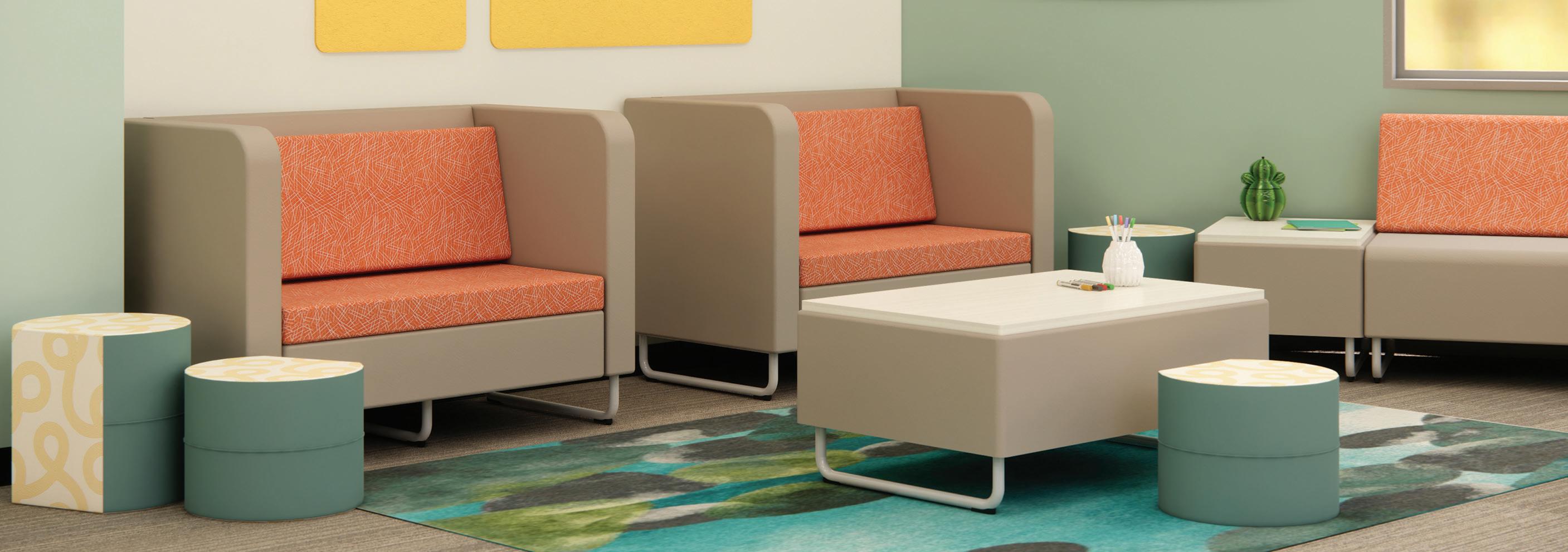
When designing common areas, consider:
• The flow of patrons through and around a building. Which spaces are underutilized? Are there pinch points that might benefit from a redesigned traffic pattern? Where do patrons naturally congregate? How do building users find their way to and from different areas of the building?
• All the ways the space might be used. Do you want to create gathering or meeting spaces? Quiet alcoves for individual work? Inspiration for those simply passing through? Will the space be loud when in use, and are there measures you can take to absorb sound for patrons looking for a calmer environment?
• How those activities translate into furnishings. You may want a mix of seating types — booths, benches, stools, couches — to accommodate groups and individuals, as well as different sizes of work surfaces. In open areas, think about adding privacy walls or furniture that subdivides the space and creates a sense of security. Patrons will want access to outlets or charging stations through a space. And, of course, all fabrics and materials used will need to be both durable and easy to clean.
When it comes to furnishing a multiuse space, flexibility is key. Your design should weigh tradeoffs between stationary furniture (sturdy, anchors the design in the space) and moveable options (adaptable, enables a wider variety of users and activities). You don’t want patrons to be able to move so much furniture that it clutters the common area or makes it difficult to use, but you do want the space to meet the needs of a broad array of users.
It's also vital to design for a variety of body sizes and shapes, especially if your common area is meant to welcome people of all ages. Child-friendly library spaces should include furniture that is low to the ground and can be used in the many ways that children sit, sprawl, and wiggle — such as the Restination Lounge Rockers from the Demco Restination Lounge Furniture Collection.
And don’t forget seating that supports the caregivers and librarians who find themselves on the floor engaging with the little ones.

Common areas transform the way we learn and build communities. At the same time, library use is shifting: the number of cardholders and digital checkouts are on the rise, while physical material checkouts are slowly declining. Increasingly, patrons are coming to the library looking not simply for books, but for human connection.
“As libraries acquire more digital materials, they’re devoting less space to housing physical items,” notes Dennis Pierce in Library Journal. “Instead, they’re creating flexible, multiuse spaces for people to gather … The modern library is a coffee house, a digital creation studio, a multigenerational meeting space, and much more.”
Shop the Restination Lounge Furniture Collection
The shelving you choose for your library can make a big difference in how your space functions and feels. By selecting the right type, you can maximize your space, improve accessibility, and create a welcoming atmosphere. Whether you’re updating your current system or starting from scratch, the right shelving will help your library thrive.
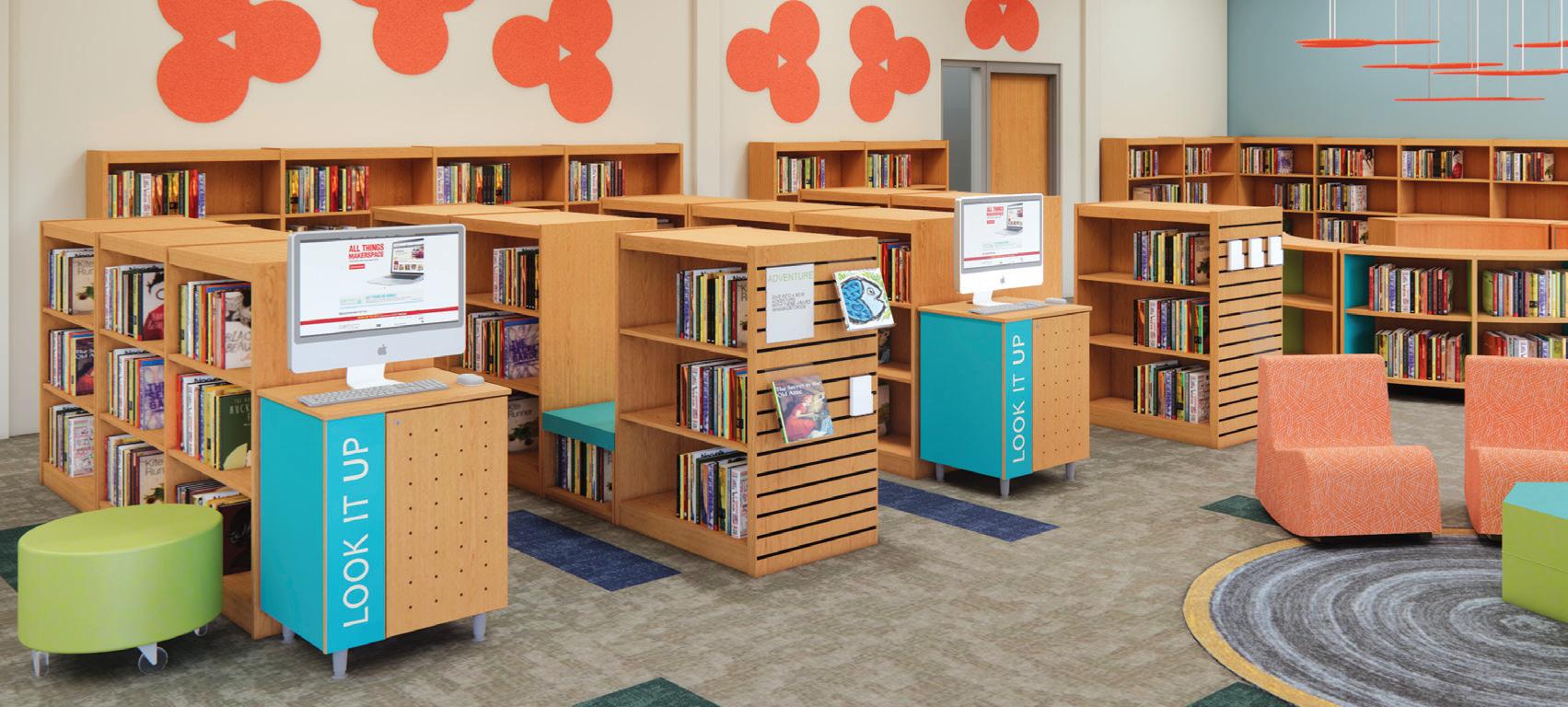
Master craftsmen build these classic hardwood pieces to last, guaranteeing that your library will remain a warm, welcoming environment for years to come. Connect single- and doublesided shelving in straight, curved, and specialty designs to house all your books and media.
Browse Libracraft

Build a reader’s paradise with easy-to-browse wood shelving designed to resist wear and tear! This line offers a traditional wood look with the durability of high-pressure laminate surfaces for lasting quality that will withstand the test of time.
Browse Americana

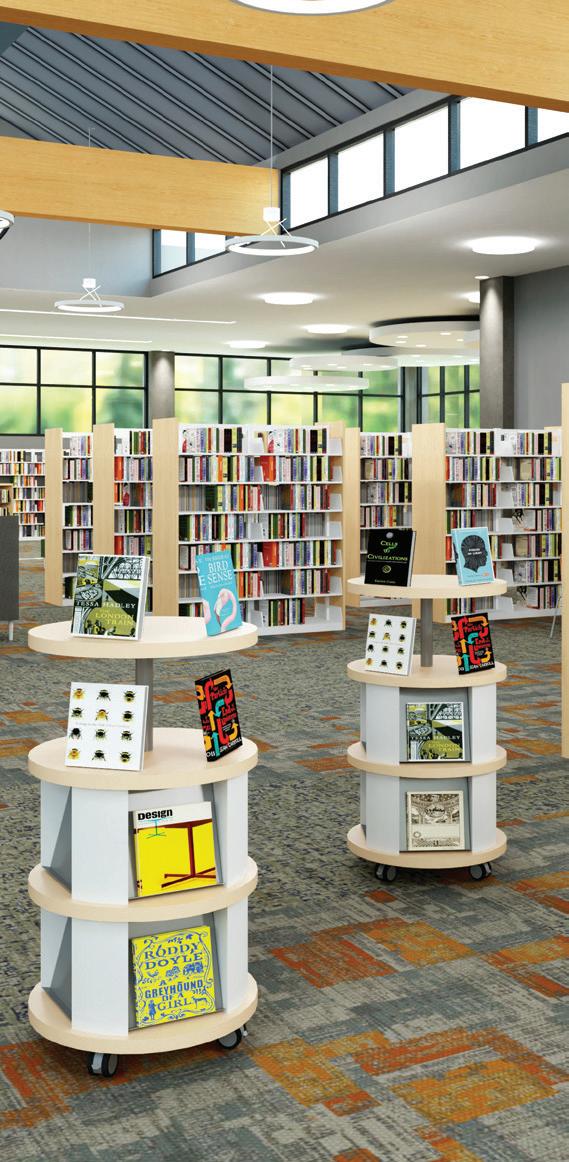


Clean lines and vibrant colors define this versatile collection. Combine its colorful modular shelving with complementary pieces like soft seating and Playpod reading nooks to create dynamic spaces that embrace the best part of learning: fun!
Browse Colorscape
Steel cantilever shelving offers a clean, open look that maximizes floor space and can be easily adjusted to meet the evolving needs of your library. The sturdy steel construction supports heavy shelf loads and is easy to clean.
Browse Steel Shelving


By Kate Larson
Do you ever wonder how the chair you’re sitting in was designed? Who decided its shape and size? Who developed its functionality (does it spin or recline)? Who chose its materials and color scheme?
“Design development is always a balance between meeting multiple criteria,” notes Stephen Gower, Demco Design Supervisor. “We want a product that’s … stable, strong, and durable, but we also want it to be manufacturable at a good price point, so the customer finds value in it.”
This balance requires time, creativity, and a deep understanding of the end users: the librarians and patrons who will interact with a product.
“It takes us a while to identify when there’s a problem versus [developing] the solution and then getting it to launch,” explains Demco Senior Product Innovation Manager Kaitlin Reese. “It doesn’t happen overnight.”
Here are seven steps that any new Demco product must go through before it’s ready to launch.

“The best way to find problems that need solving is to listen and observe,” Reese says. “I try to visit as many schools and libraries as I can.”
Once the team identifies a gap in the market, “we’ll go through a robust, ground-up process of understanding the need,” Gower says, “refining what that need is and working with other customers to confirm that we have defined it well.”
Before designing a solution, the product team needs a thorough understanding of the problem and the market.
For example, Reese says research revealed a crucial gap in the market for adaptable furniture. While existing desks could be joined together to create a five-person circle, none of them supported left-handed patrons. “So, we brought this question forward,” she explains. “Can we create a desktop shape that could be left- or righthanded, but also create a five-person circle?” That line of inquiry led to the development of the FLEXplore Share Desk.
With research in hand, the product design team begins to visualize what the final product might look like. “Hand sketching is the first step and then we move into 3D,” Gower says. “We have computer-aided programs that help us create design iterations quite quickly.” Creating a 3D model, he explains, gives the team “a conceptual rendering that could capture the feel of an idea at a very high level.”
Once design options have been narrowed down, the design and product teams collaborate to keep honing the future product’s aesthetics, function, and feasibility.
Demco’s manufacturing facility produces to-scale models of the product that can be tested for
functionality and eventually put into the field for user feedback. “We all work hand-in-hand to get those prototypes made and make sure that they’re made up to our specs,” Reese notes.
The process of building and testing prototypes exposes areas of the design that need refinement. “Once we get a prototype in,” Reese says, “[the teams] review the prototypes, make sure that they’re what we’re looking for, identify problems, and work through any design changes that are needed.”
Putting prototypes into the physical spaces where they will be used and end users to try them out provides valuable information that helps sharpen the final design, Gower says.
“How products work in spaces, I think, is where Demco has a real vibrancy and uniqueness,” he explains. “One influences the other. You can’t design a space without a product, and you can’t design a product without understanding the space.”
Once the design is finalized and the manufacturing process is set, the new product (or line) is ready for production!
At this point, Reese says, the product team ensures that the marketing and sales teams are ready to “really tell the story that we’re trying to tell — the problem that we’re trying to solve or the solution that we have — so that they can articulate that to our customers.”
One product Reese says she found particularly exciting to launch was the Show & Stow storage line. It solved a pressing need. “There’s a lot of things that classrooms and libraries need to have, but because there are so many materials in those spaces, they can become overwhelming and overstimulating.”
Gower notes that for Demco, the purpose of innovating new products is always to support lifelong learning. “[In this] industry, we’re all looking to achieve the same thing,” he says, “which is to make the learning experience as engaging and as vibrant and as valuable as it can be.”
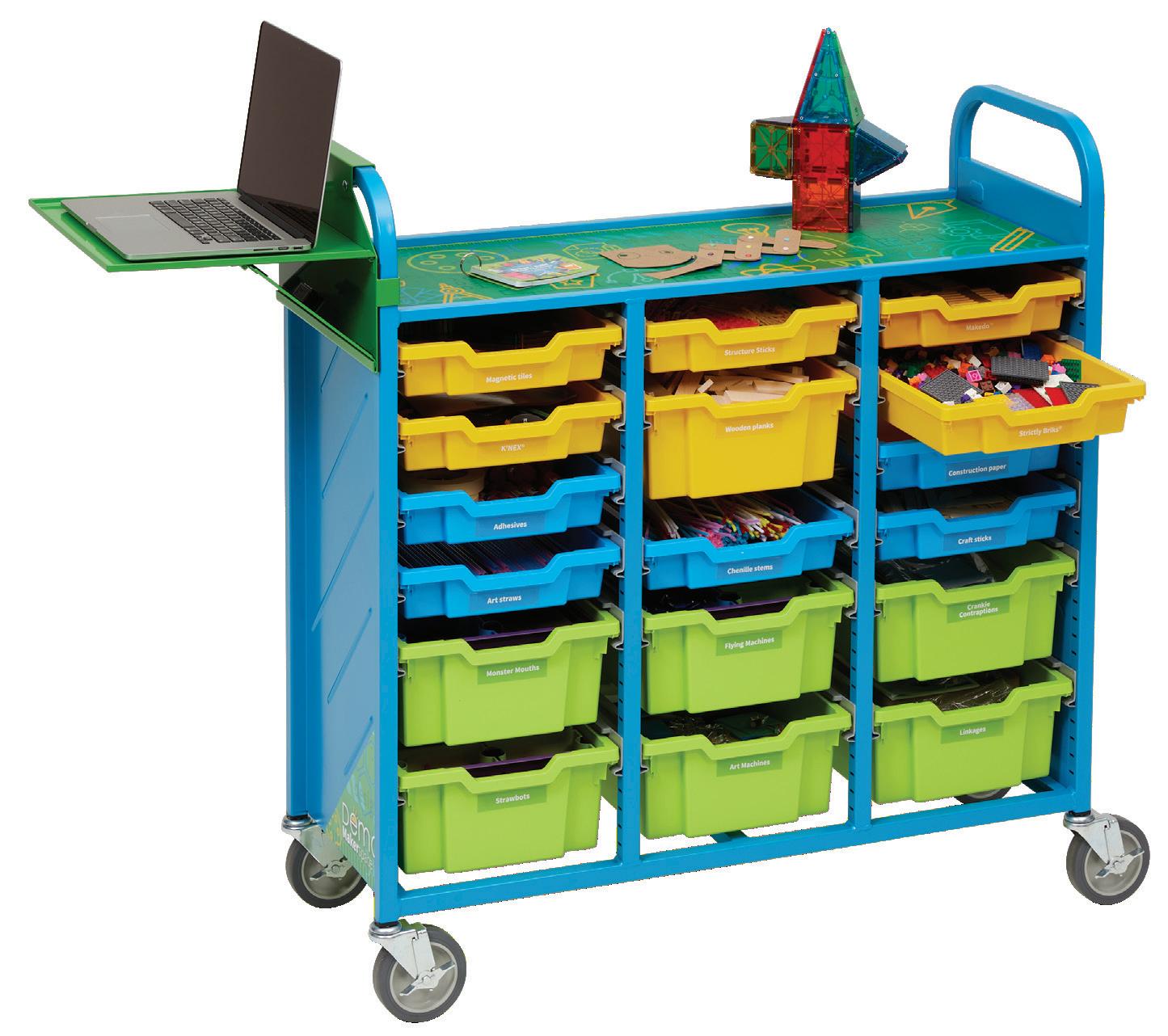

Inspire creativity and critical thinking skills that will help kids be successful in their future dream jobs. It all starts with the tools and lessons used in Demco's Makerspace Cart 2.0, Gear Guard™ Table, and Gear Guard Workstation.
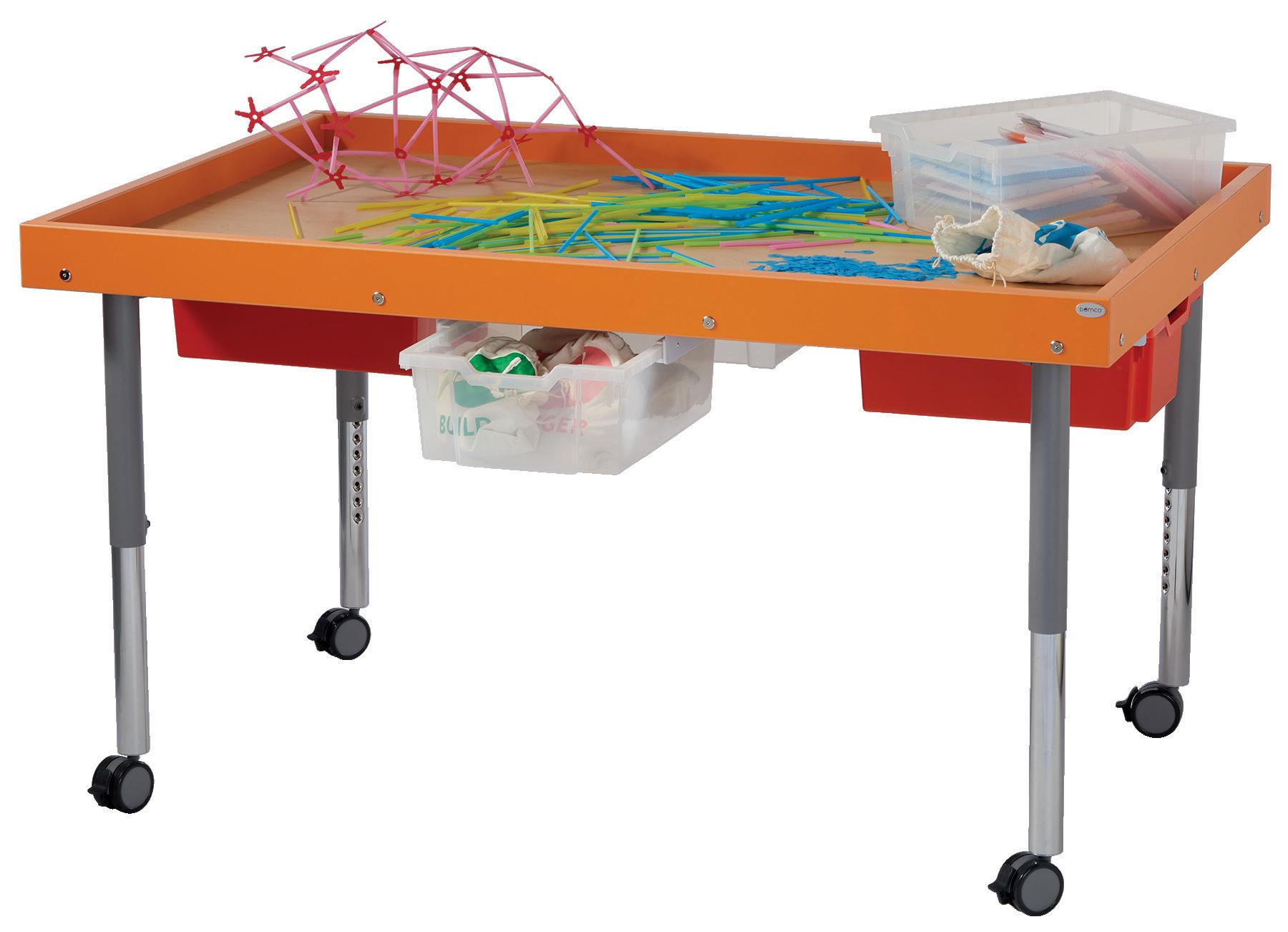
Shop Makerspace Products

By Amanda Struckmeyer
Sustainability is a core value of the American Library Association and libraries are often one of a community’s most sustainable resources. But what does sustainability look like in action for your library, and how can you promote it?
The seemingly simple act of welcoming anyone and everyone into the library is a huge step toward sustainability. Inclusive institutions like libraries are recognized by the UN as being central to this initiative — especially those who provide outreach to underserved areas.
The practice of circulating materials dovetail’s beautifully with the UN’s goal of sustainable consumption and production. Help visitors understand the library’s role in sustainability by sharing a few statistics, such as the number of items in your collection or how many circulate daily. People are often surprised by their library’s impact!
Providing reading materials is the tip of the iceberg. Libraries also connect people to resources that reduce inequity and promote sustainability — including things like circulating specialty equipment, seed libraries and community gardens, makerspaces, language classes, job fairs, and much more.
Invite young neighbors to a nature-themed storytime, host a collaborative art project using weeded books, hold a swap of some kind (art supplies, games, or even plants), teach a traditional craft like whittling, hold a DIY natural beauty products program, or put together a Green Fair for all ages featuring local organizations with environment-forward missions.
Sustainable solutions are all around us. Sometimes simply amplifying the actions you’re taking is enough to set an example and start a chain reaction of green-forward initiatives, so don't be afraid to show your sustainable side! Click here to see the full-length version of this article, including more ways to put these ideas into action.
From Shannon McClintock Miller’s Demco webinar series
Create
Highlight nonfiction books with themed displays focused on seasonal events, historical milestones, trending topics, or famous biographies.
Bring nonfiction books to hallways or classrooms with mini collections tied to curriculum topics or upcoming events.
Engage students with events like “Read Around the World” or “March Madness Nonfiction” tournaments to explore new topics.
Organize INTERACTIVE PROJECTS
Combine nonfiction readings with hands-on activities, like designing gardens after reading about community gardening.
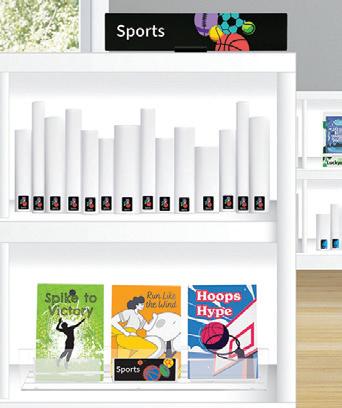


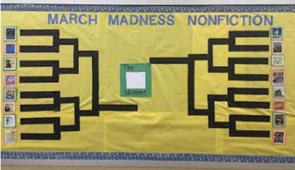


1 3 5 7 9 2 4 6 8 10
Personalize NONFICTION RESOURCES
Curate nonfiction options based on student passions, like choice boards tailored to specific interests.


Rotate categories and use labeled bins to make nonfiction easy to browse and more accessible.
Integrate nonfiction into lessons, like pairing science projects with books and virtual activities (e.g., live webcams of ecosystems).
Incorporate tools like Merge Cubes or platforms like PebbleGo to pair nonfiction texts with augmented reality or interactive features.
Feature
Encourage students to recommend nonfiction books and spotlight their picks in displays, newsletters, or social media.
Make it FUN
Celebrate nonfiction with creative, engaging activities that connect students to real-world topics and spark curiosity.






By showcasing nonfiction in engaging ways, educators and librarians can inspire curiosity, critical thinking, and a lifelong love for real-world exploration.

SEE HOW INNOVATIVE DESIGN AND FLEXIBLE FURNISHINGS REFRESHED THESE 20-YEAROLD LOCATIONS
Located in the vibrant city of McAllen, Texas, the McAllen Public Library (MPL) serves a diverse and growing community. Both of MPL's branch locations opened in 2001, and after more than two decades, it was time for a renovation. MPL embarked on a four-phase project in 2023 and the last phase — space planning, new furniture, and installation — is where Demco came in.
MPL’S
1. A more collaborative environment
2. Mobile furniture options
3. Cleanable furniture options
4. A modern approach
You always see ‘this company or this product exceeded my expectations,’ but really and truly Demco did.”
—Kate Horan, Library Director
While the numbers speak for themselves, Library Director Kate Horan was elated and said, “We’re through-the-roof happy with the results. I'm so thrilled that we were able to do everything we wanted to do, and even more. Not only did the community love the look of it, but they felt cared for by the library and by our city.”
Increase in attendance at Palm View Branch since new furniture installation Bilingual storytime +169% Toddler program +43% Teen programming +350%
programming +18%
Like sprinkles on a cupcake, the little things (sometimes unnoticed at first) complement and enhance the larger experience.
The same goes for creating an engaging learning environment. While small individual pieces might not seem like big additions, these pieces come together like a puzzle to create a cohesive and inspiring space.
Not sure where to start? Check out the ideas below!
Windows to New Worlds Wall Decals feature four distinctive designs and introduce readers to the worlds of adventure, fantasy, historical fiction, and science fiction. Use these eye-catching wall decals to highlight specific areas in your library or add depth and dimension to interior spaces.
Together, the acoustic panels and sound-absorbing decor in the CalmScape Acoustic Collection can help minimize unwanted noise and distractions during reading time. Plus, these vibrant panels and decorative ceiling tiles add a pop of personality to the space.

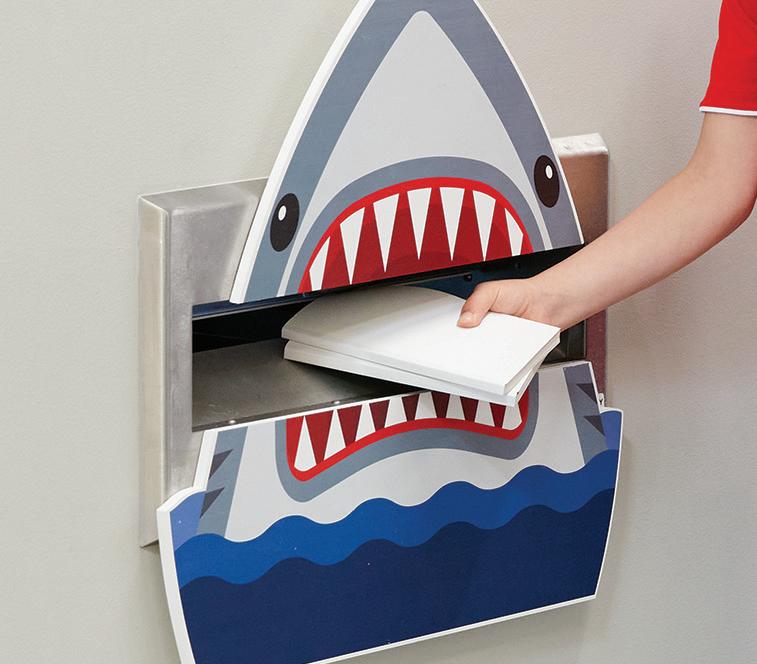

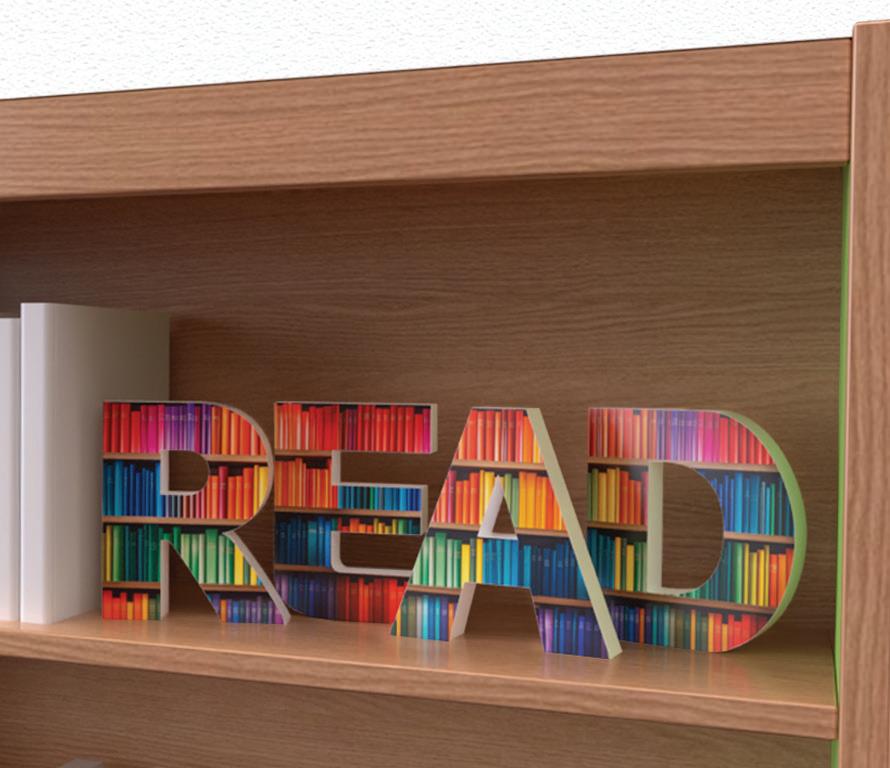
Products like Demco’s Book Return Buddies and Freestanding READ PVC Letters celebrate the joys of reading. From gobbling up book returns to reminding visitors to relax and R-E-A-D, each piece adds a bit of playfulness to your library.
Encourage readers to get comfortable with ColorScape® Playpods
Featuring cozy, head-turning designs — including a rocket, train, and more — each playpod provides a space for readers to get lost in their next reading adventure.
Upstart® Scratch-and-Sniff Bookmarks make reading time scentsational. Featuring mouth-watering scents like chocolate chip, hot chocolate, banana, and more, these bookmarks are a treat for all!
Looking for more ideas? Browse thousands of Demco-exclusive products at demco.com.


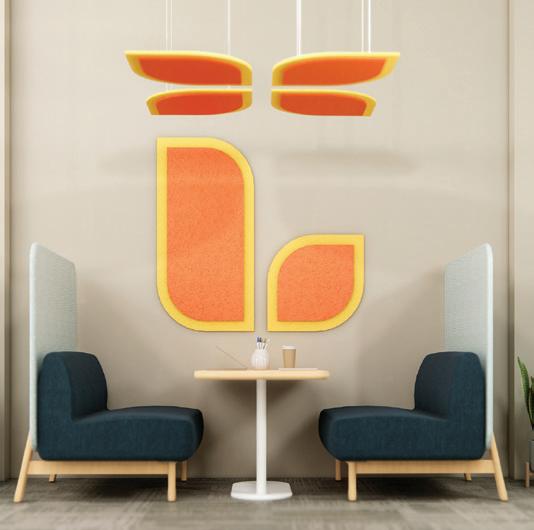
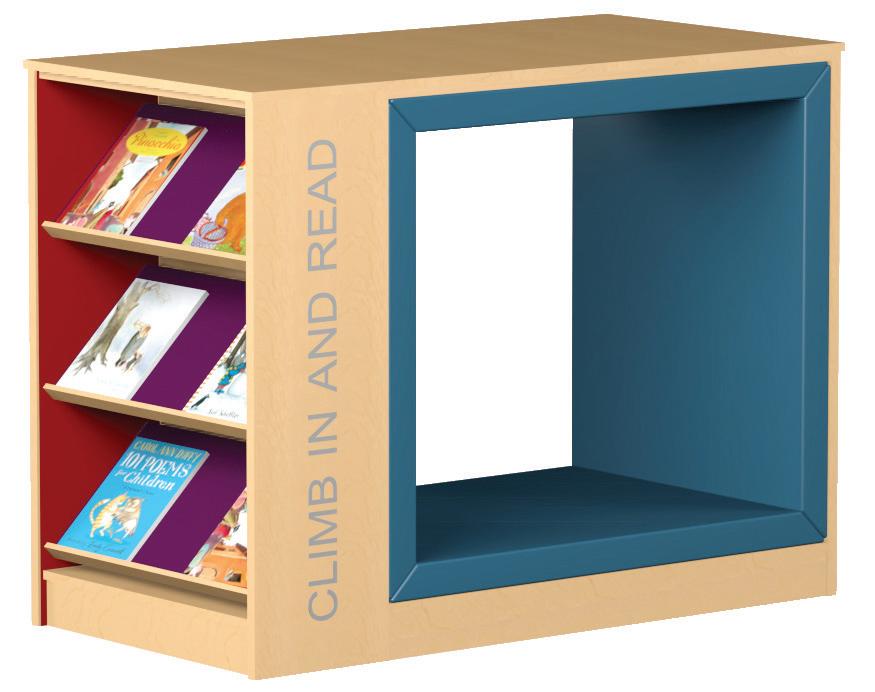




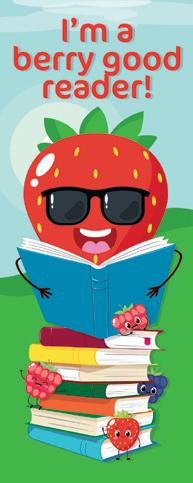





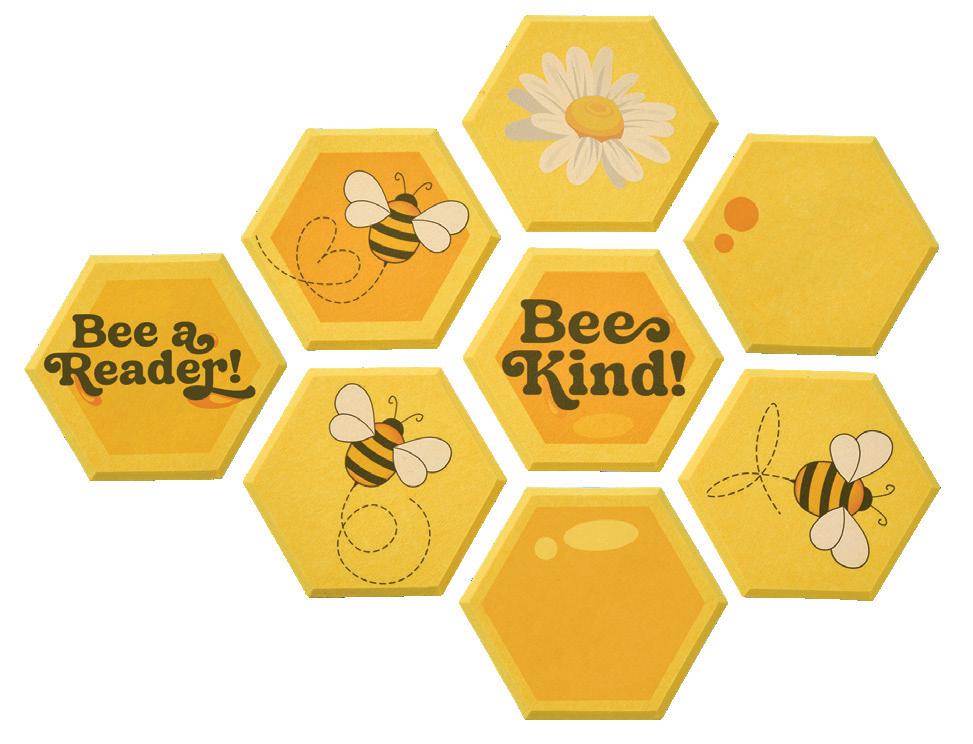



Create

Create a calming space for everyone to enjoy with the Demco Zen Zone Tent. Thoughtfully designed scenes and cutout patterns give users enough privacy to get away while still allowing for visibility both inside and out.
